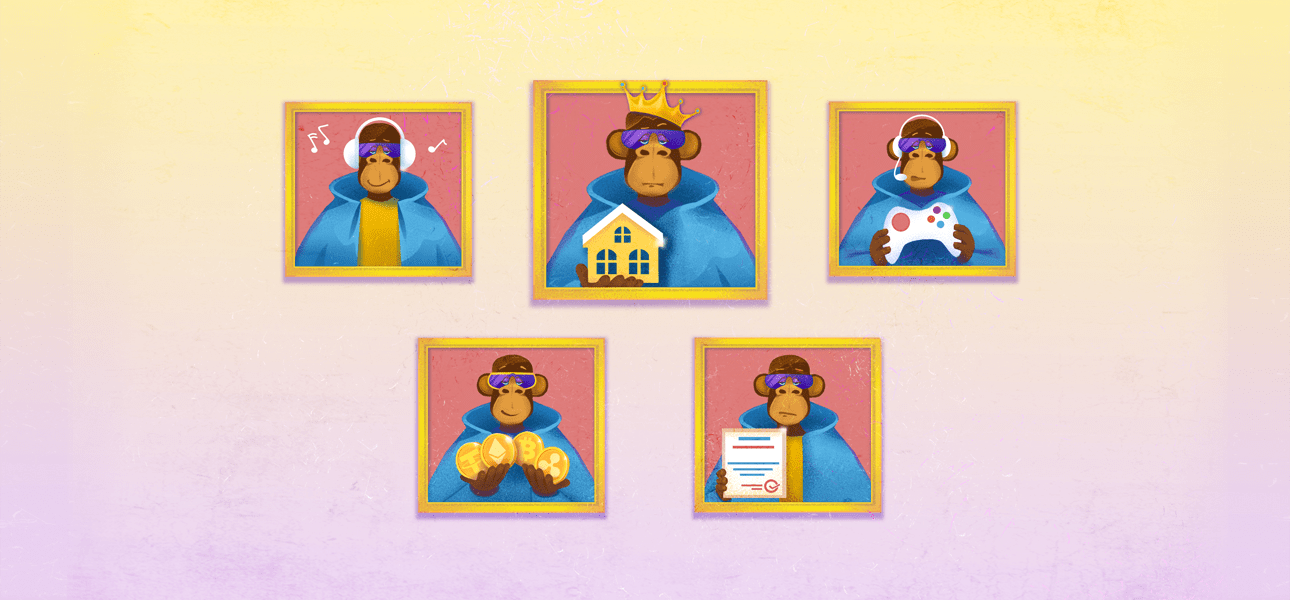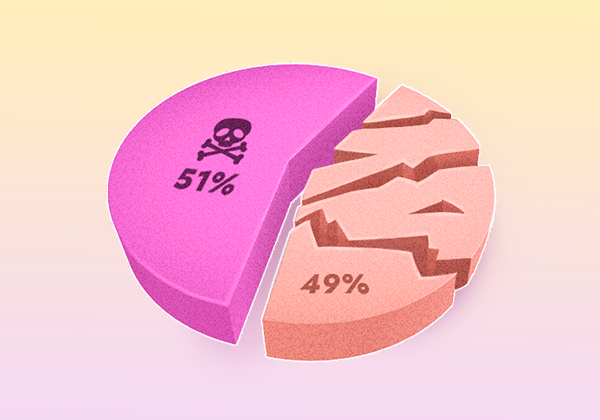
NFT Use Cases
In a world where technology constantly reshapes our daily lives, a novel concept has emerged, captivating artists and investors alike. Imagine owning a unique piece of digital art, a rare collectible, or even a virtual piece of real estate. Welcome to the fascinating universe of non-fungible tokens (NFTs), where the physical and digital worlds collide to create endless possibilities.
In this article, we will explore the various applications of NFTs, delving into digital art, collecting, gaming, finance, logistics, and real estate.
Digital Art
Non-fungible tokens have addressed the issue of the unauthorized distribution of digital art. The question arises: how can one maintain the uniqueness of virtual creations when they can be so effortlessly duplicated? Although counterfeits exist in the physical world too, tangible items can be scrutinized for authenticity.
The true worth of crypto-art lies in its capacity for digital verification of authenticity and possession. For example, anyone can view and save CryptoPunk characters from the Ethereum blockchain on their devices, but only the legitimate owner can substantiate ownership of the original piece.
In light of this, an enigmatic digital artist known by the moniker Pak crafted a series of NFTs that differed only in their titles "Affordable," "Costly," "Unmarketable," and so on. The value of these NFTs was directly influenced by the chosen names. This thought-provoking collection led many to question the fundamental factors that give value to art.
When it comes to NFTs, their value is not derived from the artwork itself but rather from the ability to demonstrate ownership of a specific asset. This distinctive feature has propelled crypto-art to become one of the most prominent applications of non-fungible tokens.
Collecting
The appetite for digital collectibles is immense, ranging from PancakeSwap bunnies to anniversary NFTs from stars. This utilization of NFTs gained traction with the advent of NBA Top Shot collectible cards. Together with NFT art, these collectible tokens constitute a substantial portion of transactions on NFT marketplaces such as Opensea, BakerySwap, and Treasureland. Collectibles and art often share similarities, so occasionally an NFT token may encompass both. These two applications are currently the most mature and widespread.
A prime illustration of NFT collecting is the acquisition of Jack Dorsey's inaugural tweet. While collecting CryptoPunk characters bears artistic significance, Dorsey's NFT tweet holds value purely for its distinctiveness.
The tweet was sold via Valuables, a platform that tokenizes tweets. Users can submit bids to purchase any tweet, while others can outbid them with higher offers. The tweet's author has the option to accept or decline the proposal—if sold, the tweet becomes a unique, autographed NFT on the blockchain.
Each NFT is authenticated by the author's verified @twitter account, ensuring that only account owners can convert their tweets into NFTs. The outcome is a scarce digital collectible that can be sold or retained. It might be difficult to comprehend why individuals would purchase others' tweets, but this exemplifies the utilization of (NFTs) to create collectibles, akin to a digital autograph.
Games
The gaming industry has an immense appetite for collectibles that can be traded and acquired. Gamers have long been accustomed to purchasing digital items whose worth is dictated by their scarcity. Microtransactions and in-game purchases have given rise to a multi-billion-dollar gaming sector that can leverage NFTs and blockchain technology.
One domain that aptly harnesses the potential of non-fungible tokens is video game tokens, which amalgamate aspects of art and collectibles while also offering advantages to players. Nevertheless, big-budget video games have yet to fully adopt NFTs.
Conversely, smaller ventures are actively integrating blockchain technology into their gaming experiences. Cases in point include Axie Infinity and Battle Pets, Pokémon-inspired games that allow users to trade pets and items and transact tokens on external peer-to-peer marketplaces. In-game NFTs not only fulfill an aesthetic role but also confer benefits upon players. Each Axie pet possesses unique combat capabilities that influence its value. For instance, cats in the CryptoKitties game may be highly sought after due to their exclusive breeding traits. The worth of each pet is determined by its rare appearance, characteristics, and attributes. One such example comprises pets that exhibit multiple rare features simultaneously.
Finance
NFTs serve purposes beyond the acquisition of art and collectibles. In decentralized finance (DeFi), for instance, they present distinct financial benefits.
While such tokens are typically employed for procuring digital items, their primary value lies in their functionality.
JustLiquidity, for example, offers an NFT staking model. Users can contribute a pair of tokens to a staking pool for a specific duration and receive an NFT to access the subsequent pool. In this case, NFTs function as entry tickets and are discarded upon joining a new pool. This model generates a secondary market for trading NFTs with provisioning capabilities.
Another instance is BakerySwap's non-fungible token combos, which grant holders enhanced staking rewards. By supplying BAKE tokens, users obtain NFT combos with a randomly determined share of coins and participate in staking. These combos can be utilized in various ways: sold on secondary markets or employed for staking. As a result, the fusion of NFT gamification and DeFi instruments has given rise to another intriguing application of non-fungible tokens.
Logistics
Blockchain technology offers valuable applications in the logistics industry due to its transparency and immutability, ensuring credibility and reliability of supply chain information for perishable goods like food and medicine.
NFTs, representing unique items, can be utilized for tracking goods by providing data on their origin, travel route, and warehouse location. For example, luxury Italian shoes could be assigned an NFT that's scannable on their packaging. Customers can trace the shoes' production details and follow their delivery process, including warehouse locations and arrival or departure times.
However, implementing non-fungible tokens (NFTs)in the delivery process requires a unified system across the entire supply chain, which can be challenging due to the numerous participants involved. Consequently, NFT applications in this field are not yet widespread.
Notable blockchain-based logistics solutions include TradeLens from MAERSK and Food Trust from IBM, utilizing IBM's NFT-enabled blockchain, Hyperledger Fabric. However, it remains uncertain if NFTs are currently utilized in these processes.
Conclusion
The myriad applications of non-fungible tokens showcase their ability to revolutionize a range of sectors and alter the way we understand value and ownership in today's digital era. Spanning digital art, collectibles, gaming, finance, logistics, and real estate, NFTs have carved new pathways for innovation, artistic expression, and investment prospects.
As NFT technology progresses, it’s expected to anticipate further development and diversification in these fields, along with the emergence of novel applications yet to be conceived.
► Sabai Academy — a place where studying blockchain, crypto, fractional ownership, and real estate investments becomes a catalyst for capital growth!
Sabai Academy
Smart Reward System exclusive for academy participants!
Related Articles

Factors to Consider When Choosing a Property for Investment

What are Crypto Wallets, and What Types are They?

